April 11, 2017 - We have an extremely large Agave plant in our backyard that originally was about 2-3 feet tall when we moved here in 2009. The Agave is a genus of monocots native to the hot and arid regions of Mexico and the Southwestern United States. Agaves are succulents with a large rosette of thick, fleshy leaves, which in most species end in a sharp terminal spine. The plants are perennial, but each rosette only flowers once and then the Agave dies. During flowering, a tall stem or "mast" ("quiote" in Mexico) grows from the center of the leaf rosette and bears a large number of short, tubular flowers. After the development of fruit, the original plant dies (semelparity). In truly semelparous species, death after reproduction is part of an overall strategy that includes putting all available resources into maximizing reproduction, at the expense of the future life of the plant.
After learning about the life cycle of the Agave, not to be confused with the Yucca, I've been watching ours to see if the mast was beginning to develop. Yesterday my years of monitoring paid off when I saw the first appearance of the mast. It's in the center of the plant rising about six inches above the top leaves.
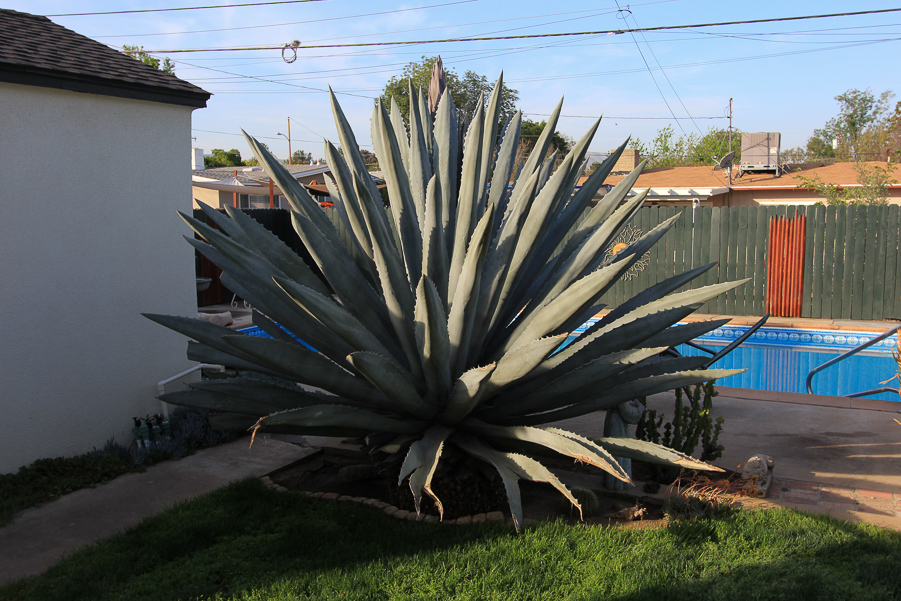
This is a ten foot stepladder in front of the Agave. The leaves are about eight feet in length.
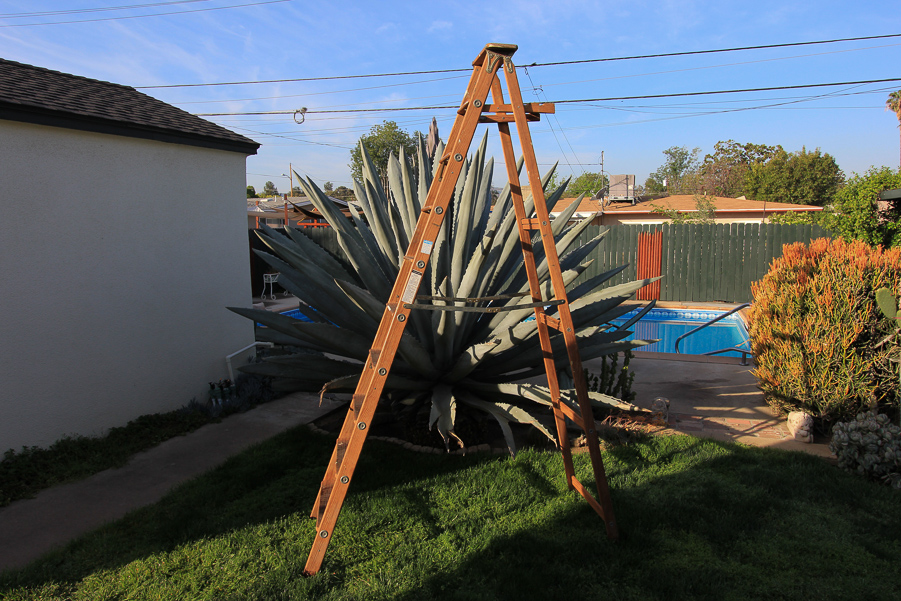
This is a close up of the mast.
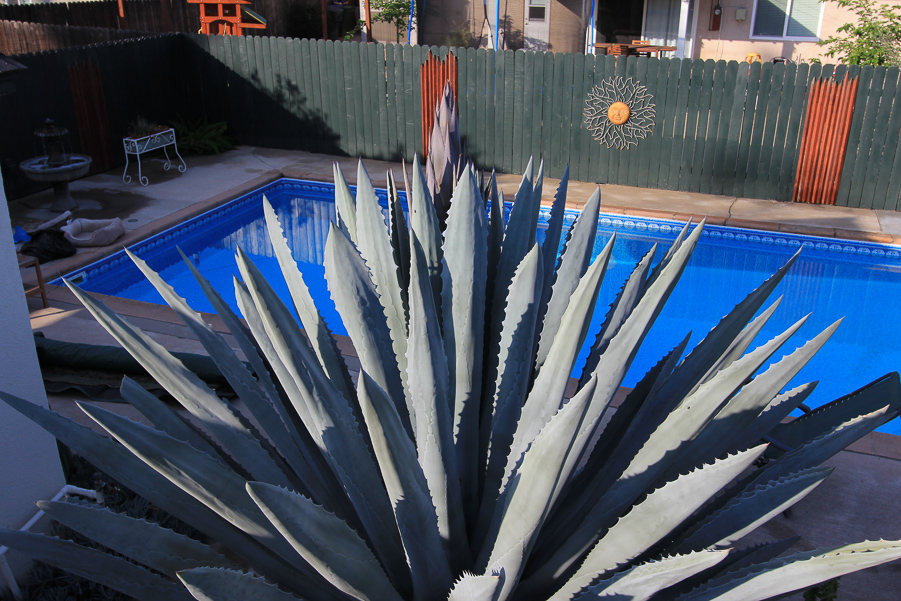
April 12, 2017 (Day 2) - It appears the mast has grown about 6-9 inches since yesterday morning.
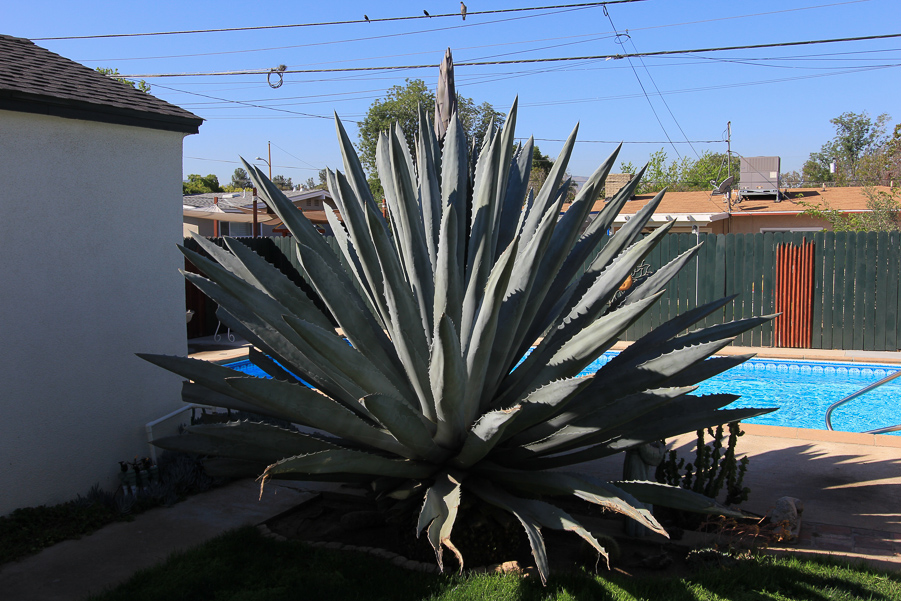
April 15, 2017 (Day 5) - The mast continues to grow, as shown in this latest picture. For reference purposes, the dark green trim on the roofline of the garage is a little over eight feet high. I have already mentioned that the Agave is a semelparous species. Semelparity is also known as "big bang" reproduction, since the single reproductive event of semelparous organisms is usually large, as well as fatal. A classic example of a semelparous organism is the Pacific salmon, which lives for many years in the ocean before swimming to the freshwater stream of its birth, spawning, and dying.
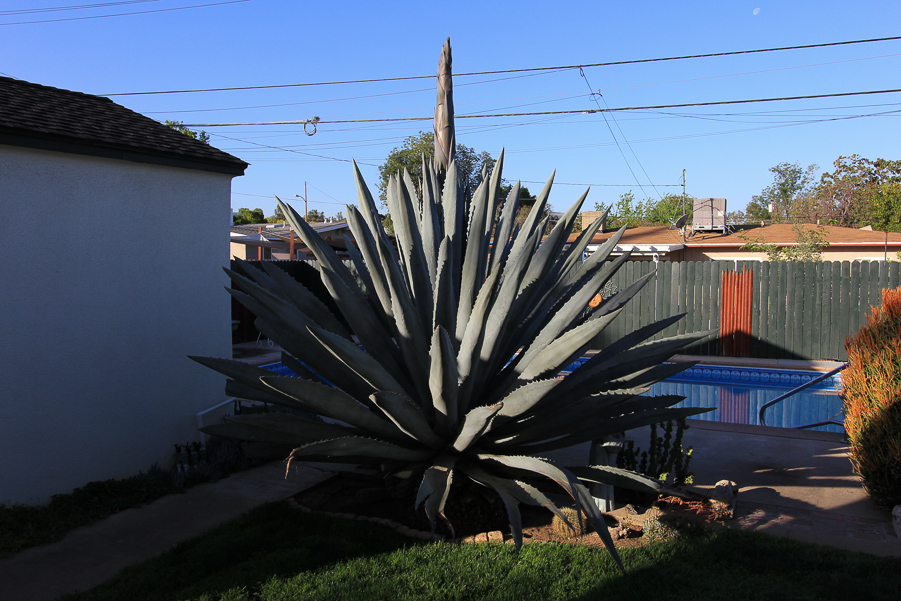
April 18, 2017 (Day 8) - The mast appears to be about six feet taller since I first noticed it, so that means it's averaging about nine inches of growth per day.
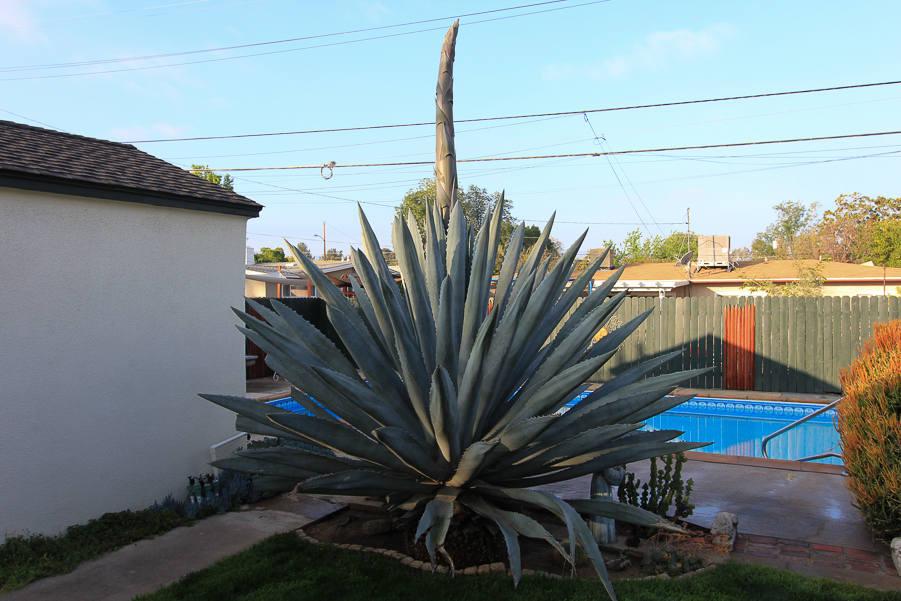
April 21, 2017 (Day 11) - The power lines help to measure the progress of the mast. It's now about two feet higher than on Day 8.
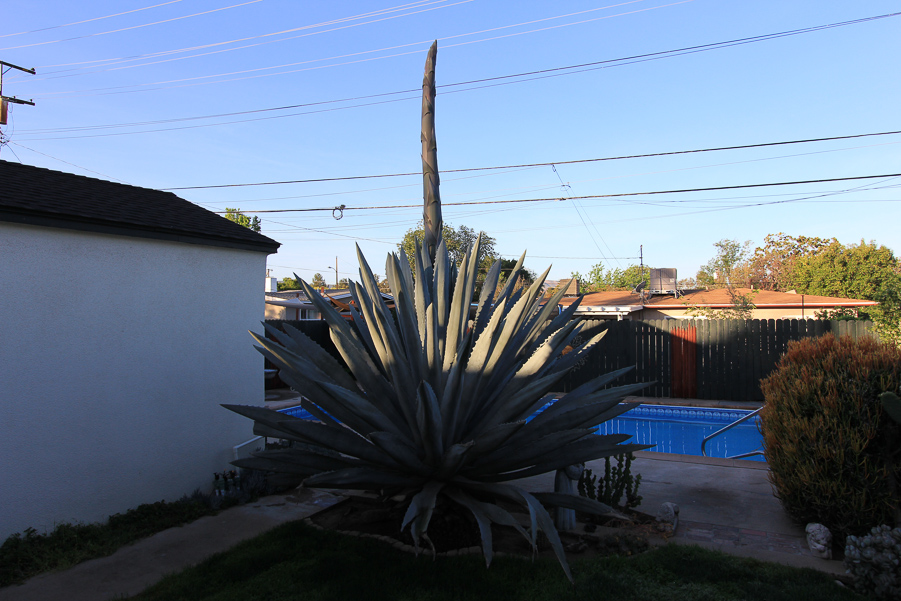
April 22, 2017 (Day 12) - The mast is looking kind of other worldly, like something you'd see in a science fiction movie.

April 27, 2017 (Day 17) - The last couple of days has been uneventful and the growth of the Agave appears to be slowing. It's height is probably about 18 feet. However, when I looked at it this morning something new has appeared. The first signs of a flower are now peeking out from under several of the leaves around the mast. It's getting more interesting!

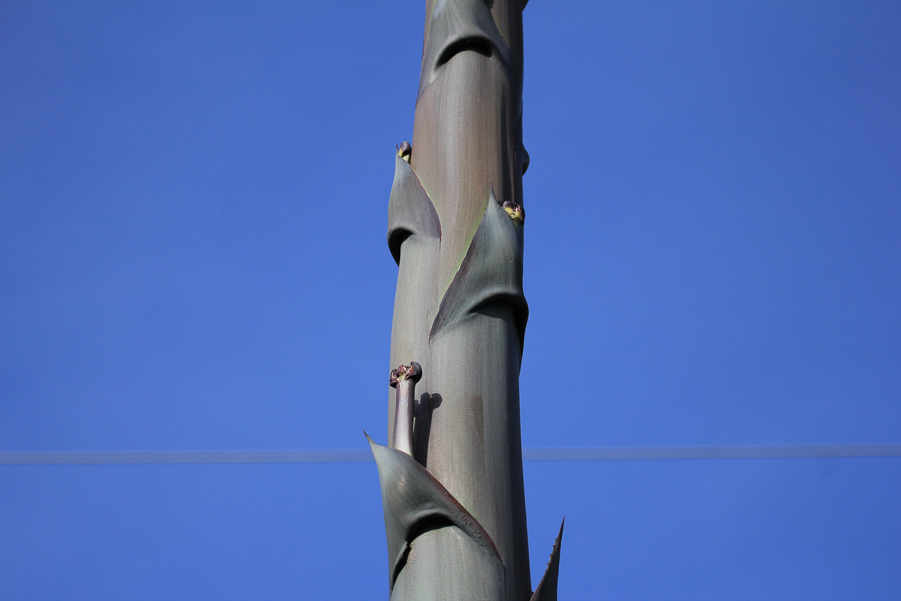
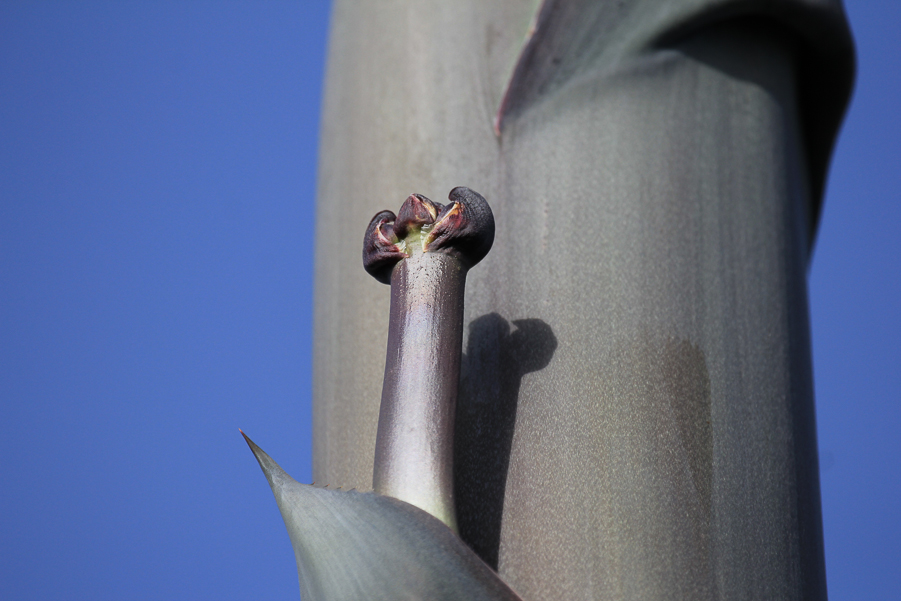
April 28, 2017 (Day 18) - There's another new development today, this time at the base of the plant. Before today and for years, I would find small Agave shoots around the base of the plant but, they looked liked miniature agaves with a typical rosette shape. Today all around the base is a new kind of growth, which is a single long and slender shoot. I wonder what's in store with these guys?
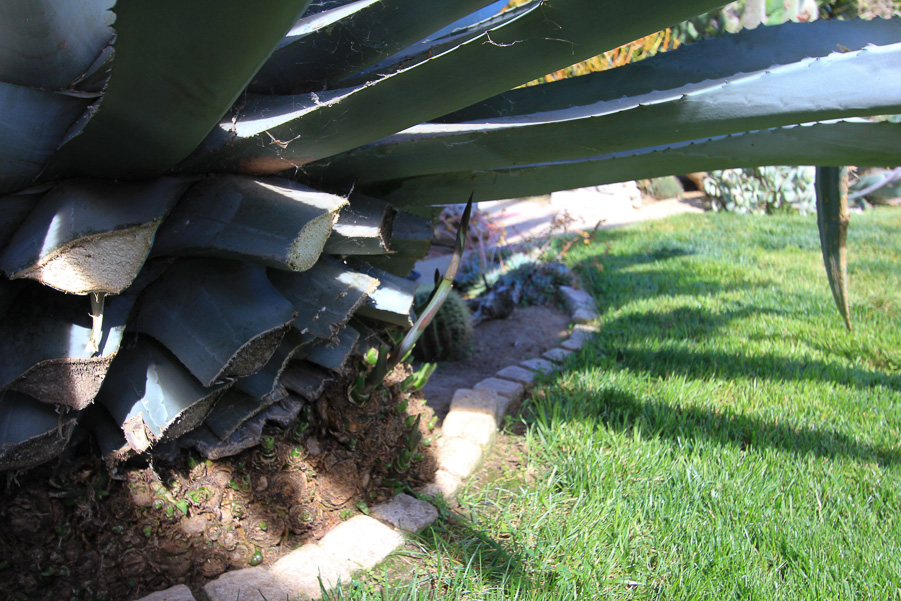
The one on the upper left is almost two feet long, bending around and up through the leaves.
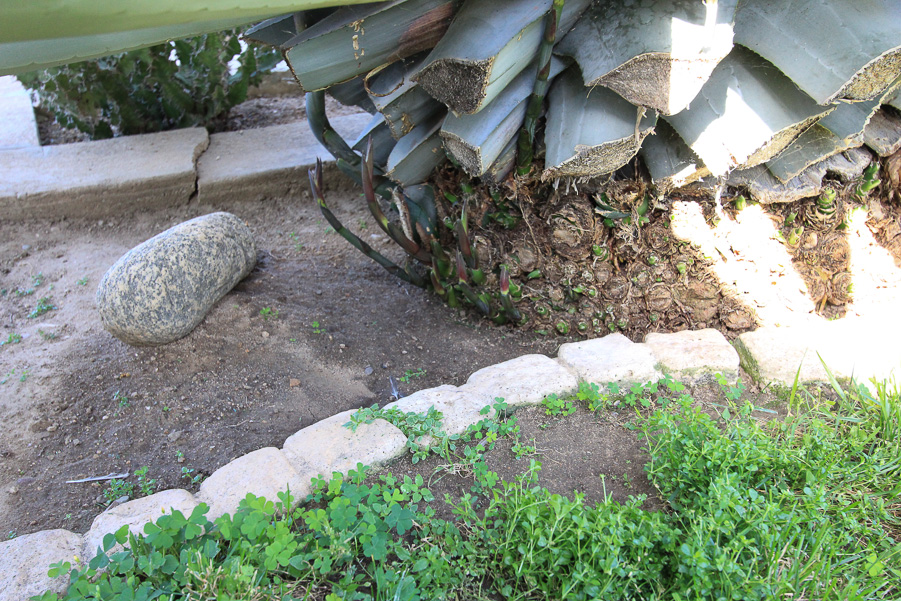
May 1, 2017 (Day 21) - The growth of the mast has definitely slowed, but there's plenty of activity with the flowering and whatever those shoots are that are growing out of its base.

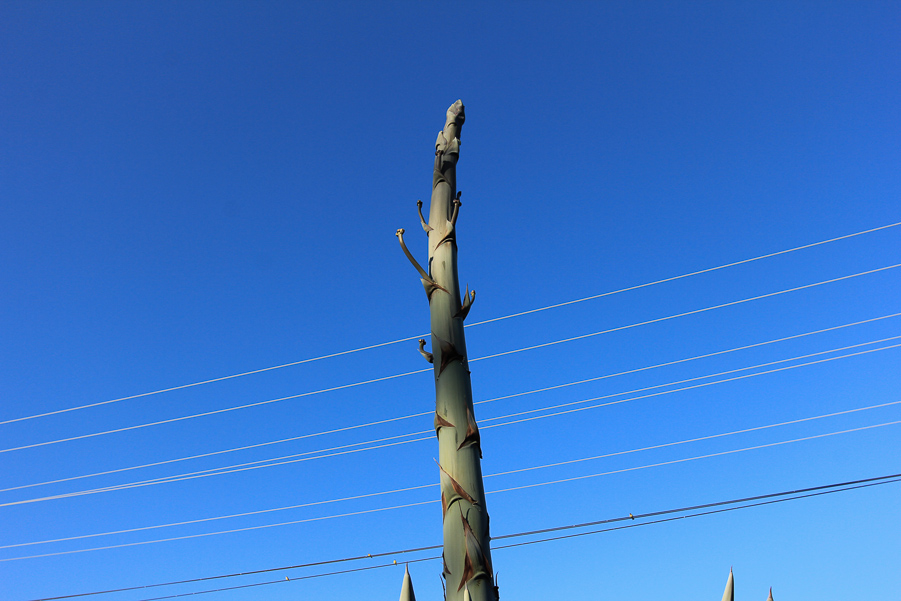
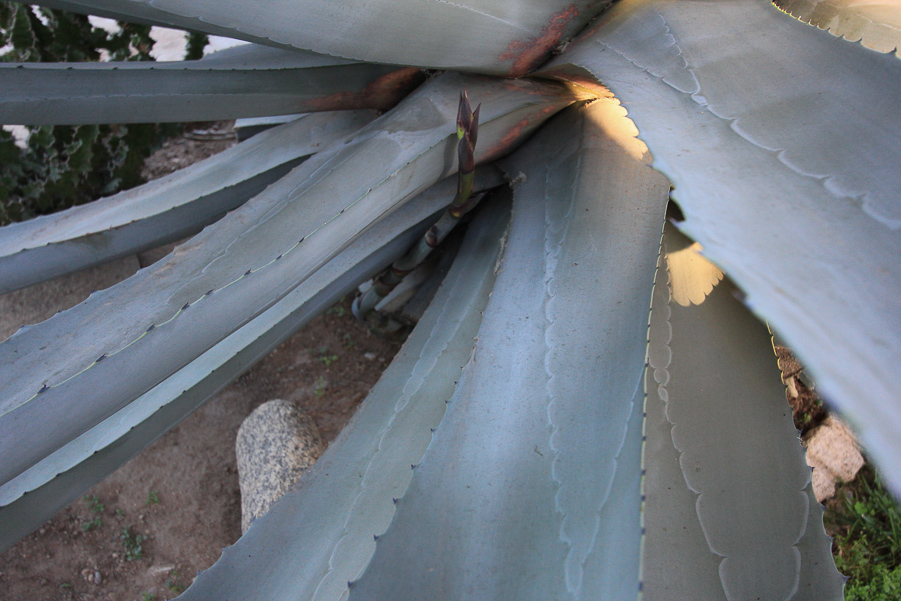
May 3, 2017 (Day 23) - The height of the Agave is still about the same, it's roughly 18 feet tall. The flower shoots are more defined, although nothing has opened yet. In addition to the strange shoots coming out of the base, I noticed that there are similar shoots popping up everywhere between the big leaves. Some of these are now three to four feet long. Their shape is like an asparagus stalk, but they're huge, and they have a diameter of almost three inches. It's a mystery.
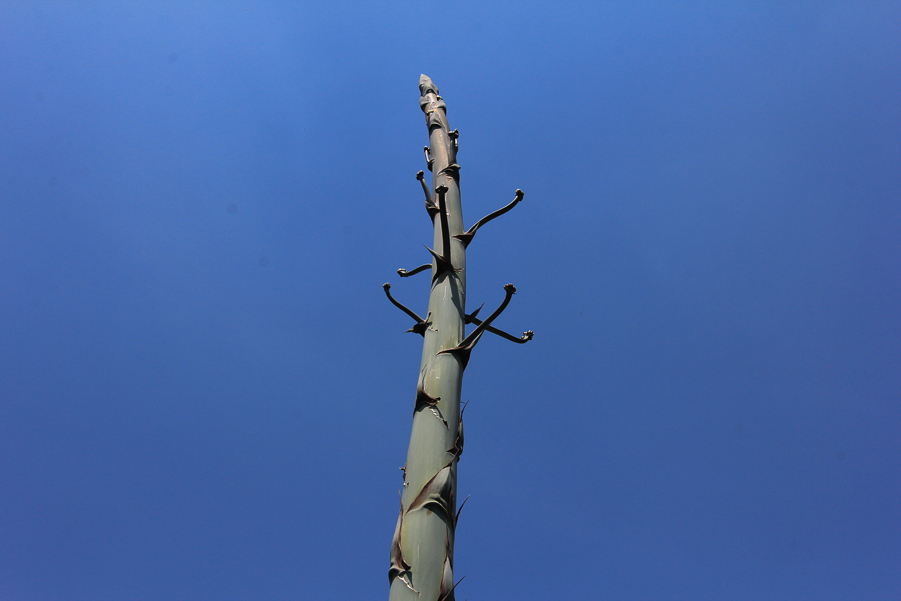
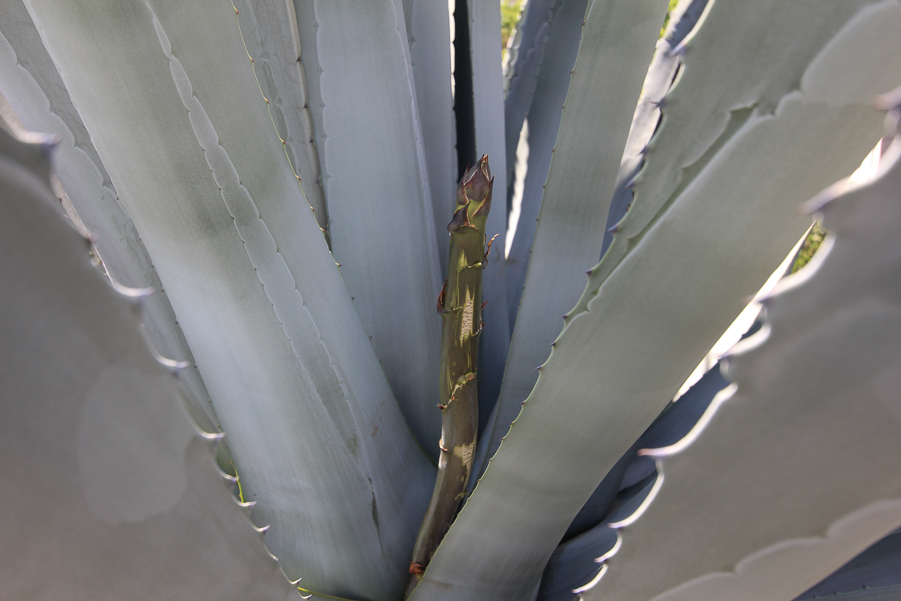
May 4, 2017 (Day 24) - Some of the flowers are beginning to open. The first picture shows an unopened flower and the second one is now opening.
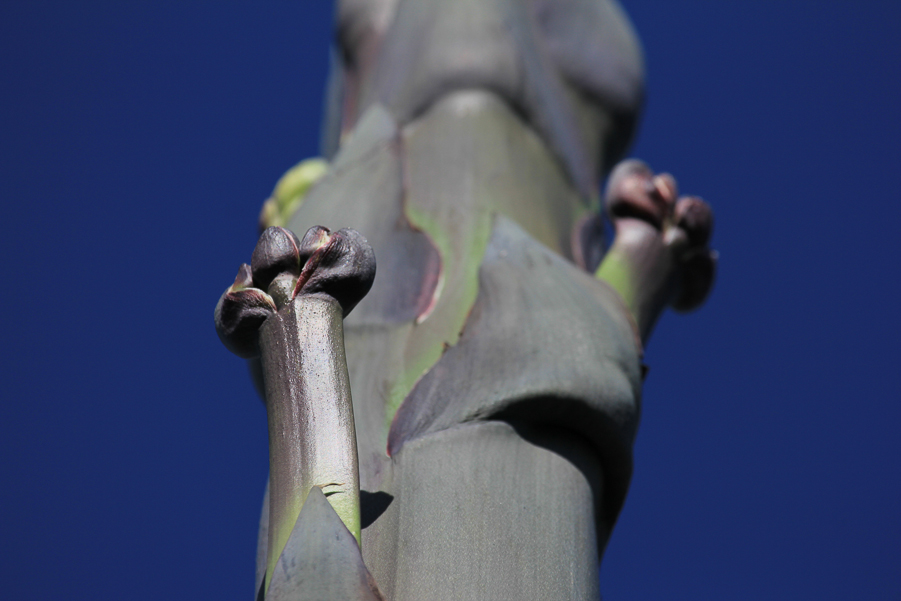
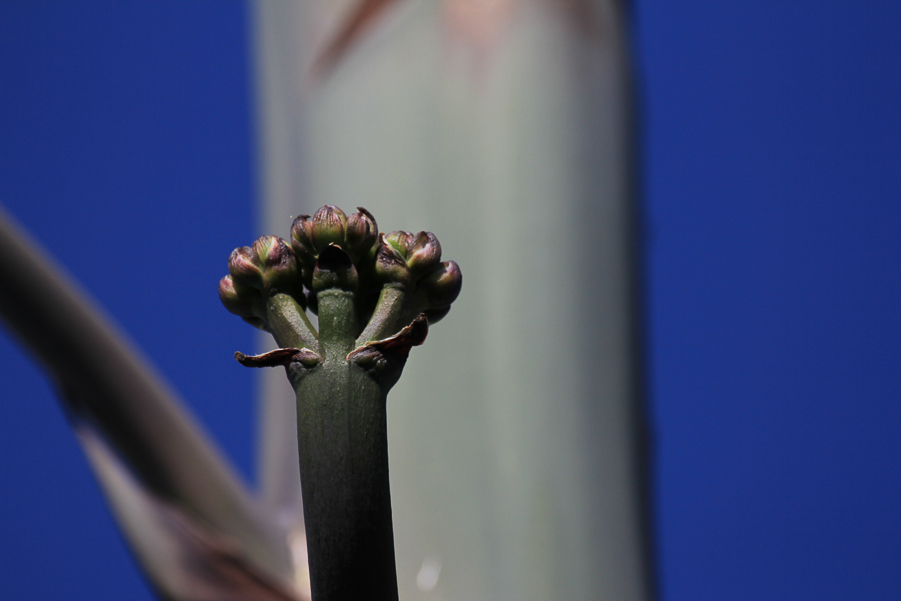
May 7, 2017 (Day 27) - There hasn't been any dramatic new developments with the Agave in the last few days, except the mast appears to have grown in height.
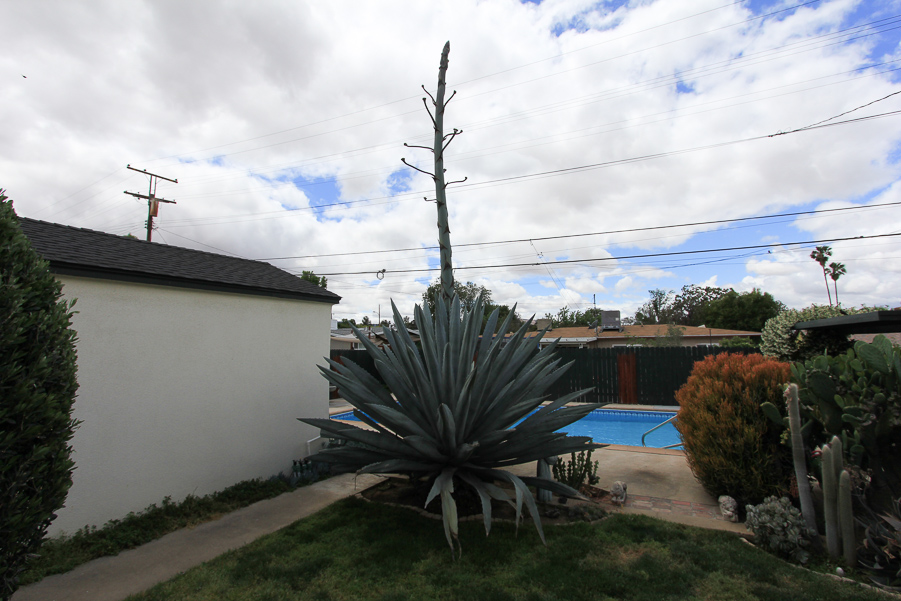
The shoots coming out of the base of the plant continue to grow and I'm speculating that these may form into miniature versions of the large mast and that they will also produce flowers like the original mast. They seem to be acquiring the same shape and they have similar markings. Time will tell if my theory is correct.
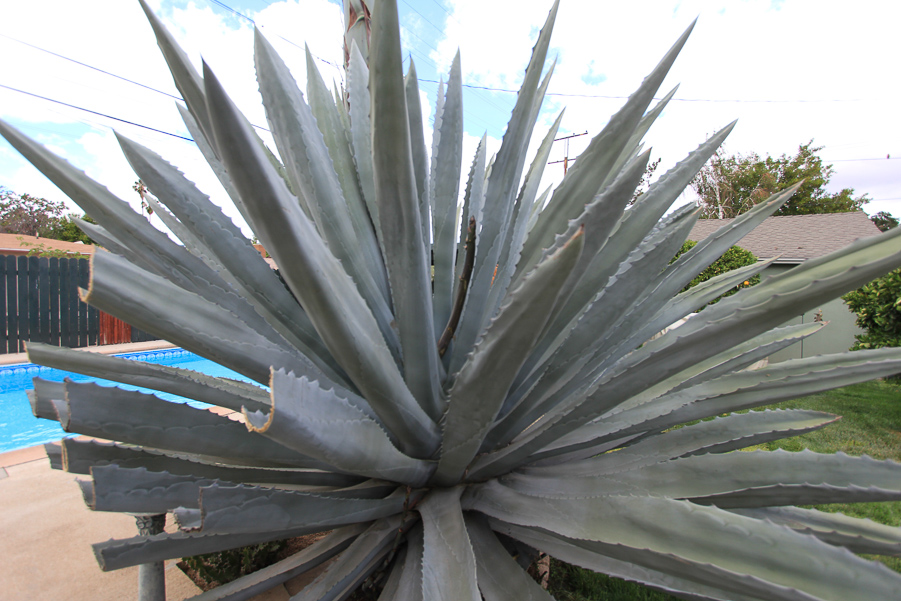
The flowers continue to open, but their progress is fairly slow.
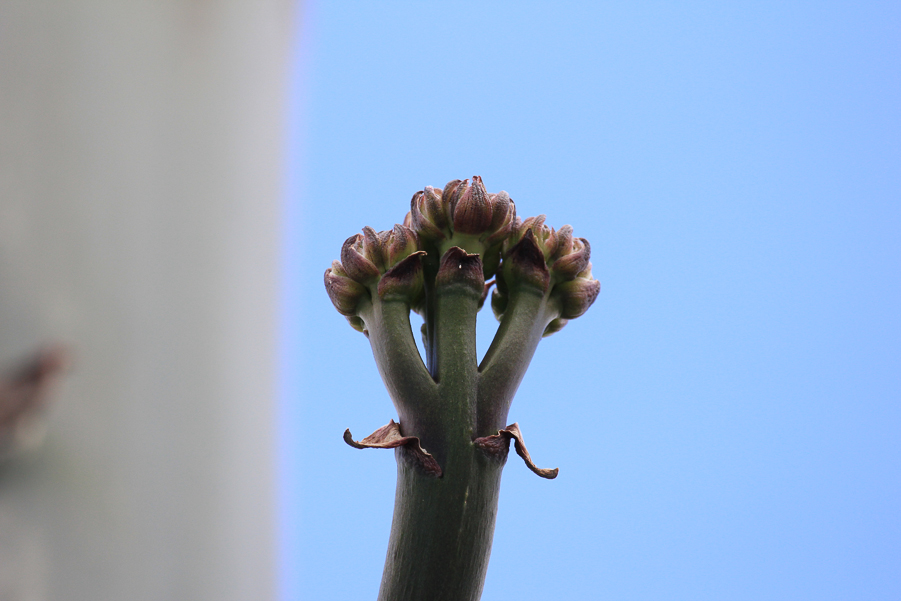
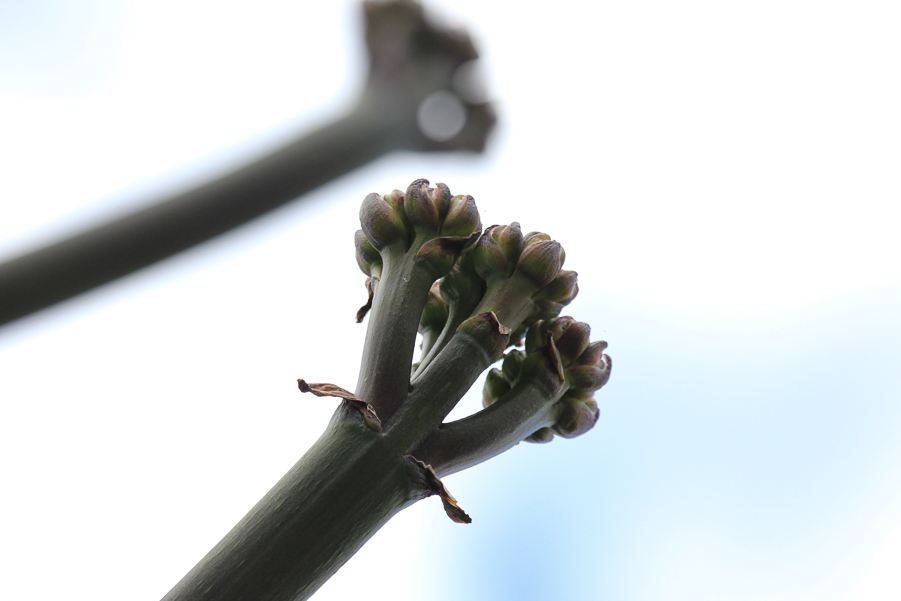
May 12, 2017 (Day 32) - The Agave keeps growing and the flower development continues.
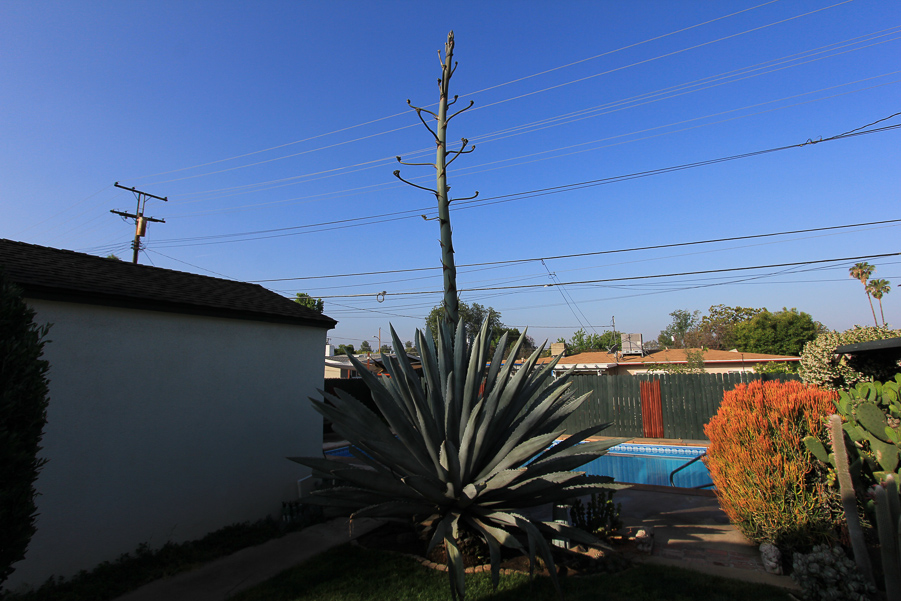

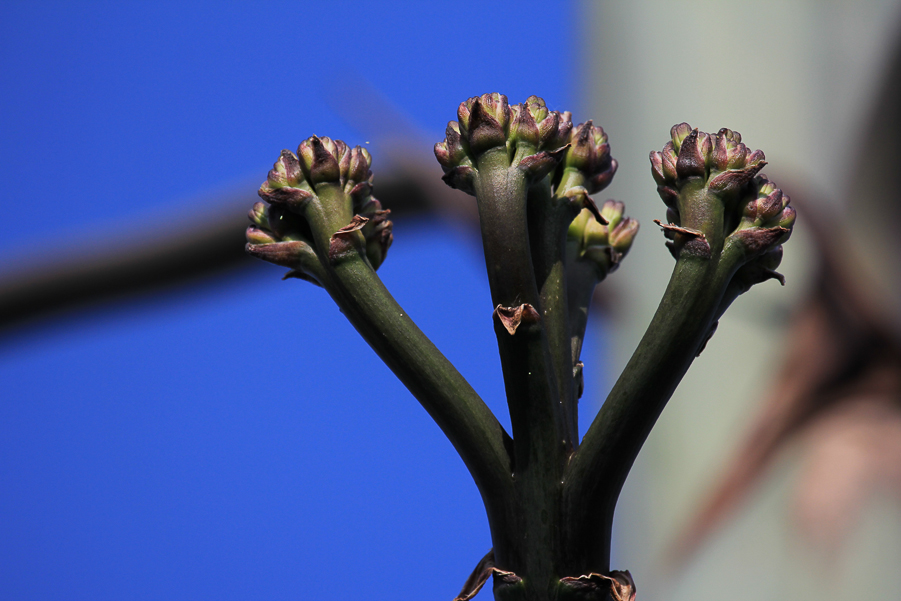
May 15, 2017 (Day 35) - The flowers are continually changing over time, although what the end product will look like is still a mystery.
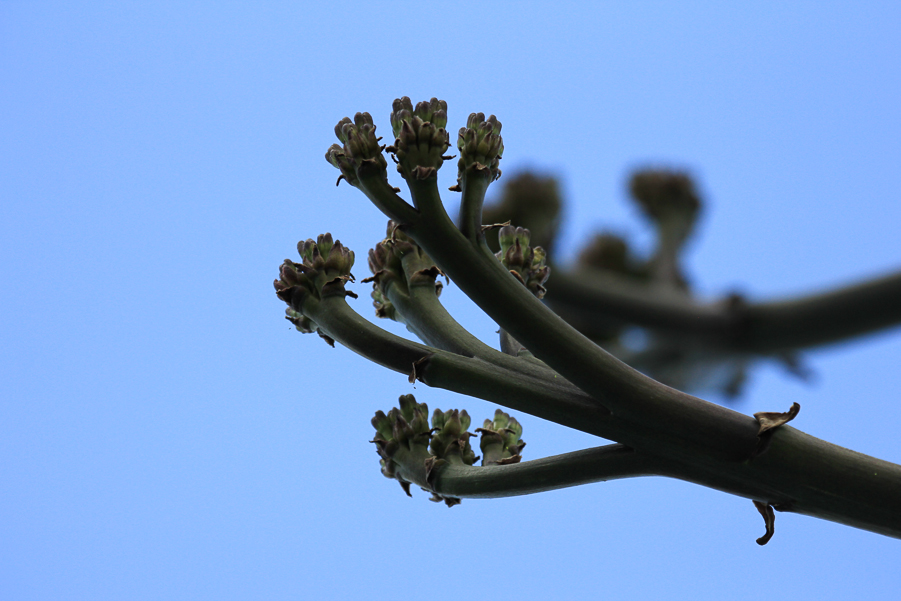
May 22, 2017 (Day 42) - Although it's hardly noticeable when I look at the Agave daily, it appears the mast has grown to about 22-23 feet in height. The flowers are also developing well and it appears that there will be a lot of blossoms.
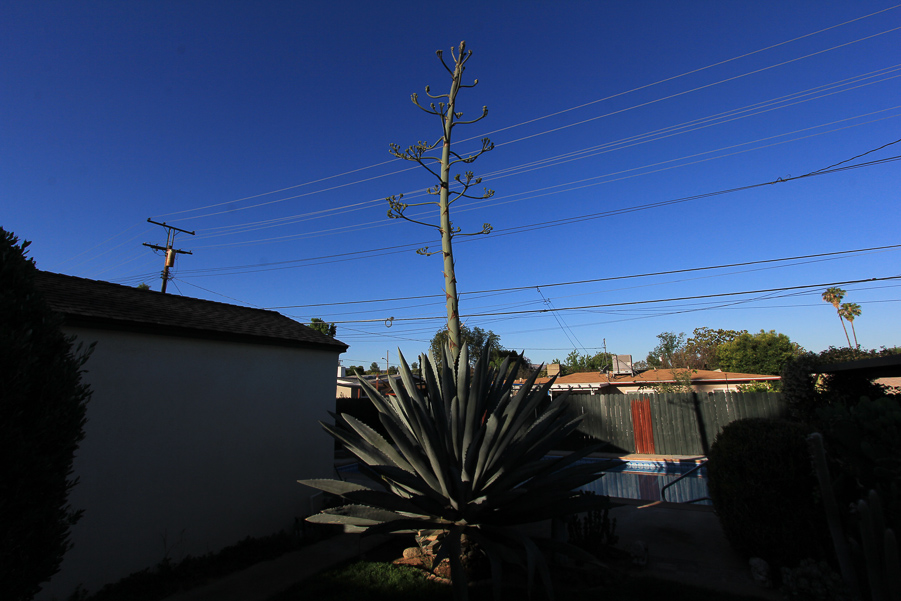
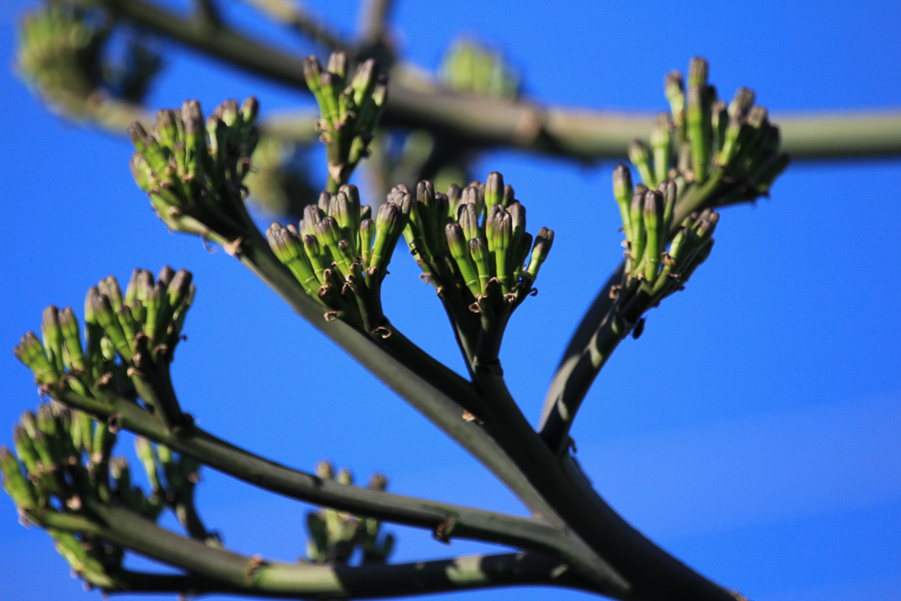
May 27, 2017 (Day 47) - It's been five days since I last photographed the Agave and the mast seems to have grown another few feet. It's probably about 25 high now. Originally I thought that I'd be able to remove it after it dies but, I now realize that I will have to hire a contractor for its removal. Working alone, it would take me forever to cut it up and dispose of it. The shoots that emerged from the base are growing into "mini-masts" and it appears they will be flowering as well. The old Agave is putting on quite a show!
June 8, 2017 (Day 58) - If the Agave gets any taller, I'm going to have to turn the camera sideways. I've read that the mast can go as high as 30 feet and this one will probably be close to that height.
Some of the leaves are now drooping and they all will when the plant dies.
The flower formations are getting much more fuller than in the past.
June 23, 2017 (Day 73) - There has been some progress in the bloom development as the Agave continues to grow taller.
Many of the leaves are now falling.
A few of the blooms around the base of the plant have begun to open, which is reminiscent of how daylilies look. I think these are called "pistils," which are the female reproductive organs. All of the flower development will occur around the pistils in the center. Note a few bugs that did some "photo-bombing" on me.
June 27, 2017 (Day 77) - At this point I'm not sure if these green squiggly things are the pistils (female) or the stamen (male). It seems as though the flowers are developing from the bottom to the top of the plant, since I haven't seen anything opening above the lower branches of the mast.
July 1, 2017 (Day 81) - Judy and I can't figure out what's next with this plant. It's very full and beautiful, but all of the squiggly green things are drying up. Will there be any blooms at all?
July 3, 2017 (Day 83) - The green squiggly things have dried up and now there is a single shoot emerging from each blossom.
July 4, 2017 (Day 84) - The Agave has been attracting a lot of birds and bees lately.
July 13, 2017 (Day 93) - The bottom half of the Agave is dying, while the top half continues to blossom. We've found that the green squiggly things are the blossoms and that there won't be any additional color as the plant matures. The bottom leaves have all fallen with a few exceptions.
Just like a ripe banana, the leaves have darkened and are no longer attractive. As the blossoms have dried out, they have begun to fall off the plant.
However at the top many blossoms still haven't opened and the birds and bees continue to drink the nectar.
July 20, 2017 (Day 100) - Sadly it is the beginning of the end for the Agave. For a while it seemed to get fuller as each day went by, but now it has begun to lose that fullness as the bottom blossoms dry out and drop the seed pods to the ground. At the end I assume all of the branches will be bare and only a dried out skeleton will remain. However, it has been quite a show.
July 24, 2017 (Day 104) - The seed pods are rapidly dropping and hundreds of them have fallen onto the lawn. If I don't rake them up, I'll have an Agave forest! I think the green pods have been successfully pollinated by the birds and the bees. The black ones probably have not been pollinated and the pod has simply dried up. Judy and I discussed the situation and we'll probably have our tree contractor remove the Agave in a couple of weeks.
August 11, 2017 (Day 122) - Well, we thought that today was the day for the Agave to come down, but, the contractor got tied up and won't be here until next week. It's looking pretty sad and we've seen a number of agaves in our travels and some of them have looked terrible once they have completely dried up. Ours is about two or three weeks away from that stage, so now is as good a time as any to have it taken out. The finale of this adventure will occur on August 15th.
August 15, 2017 (Day 126) - Well today was the big day, which was kind of sad, but the Agave was done. Here's how it went.
Fini! It was a great four month adventure.